Last November, a group of Utah Valley University (UVU) biology students and professors beelined to the Vancouver Convention Centre. Thousands of others joined them like a swarm of locusts. The building was a hive of activity. Its visitors were social butterflies, presenting, researching, and networking. But what had these Wolverines all aflutter?
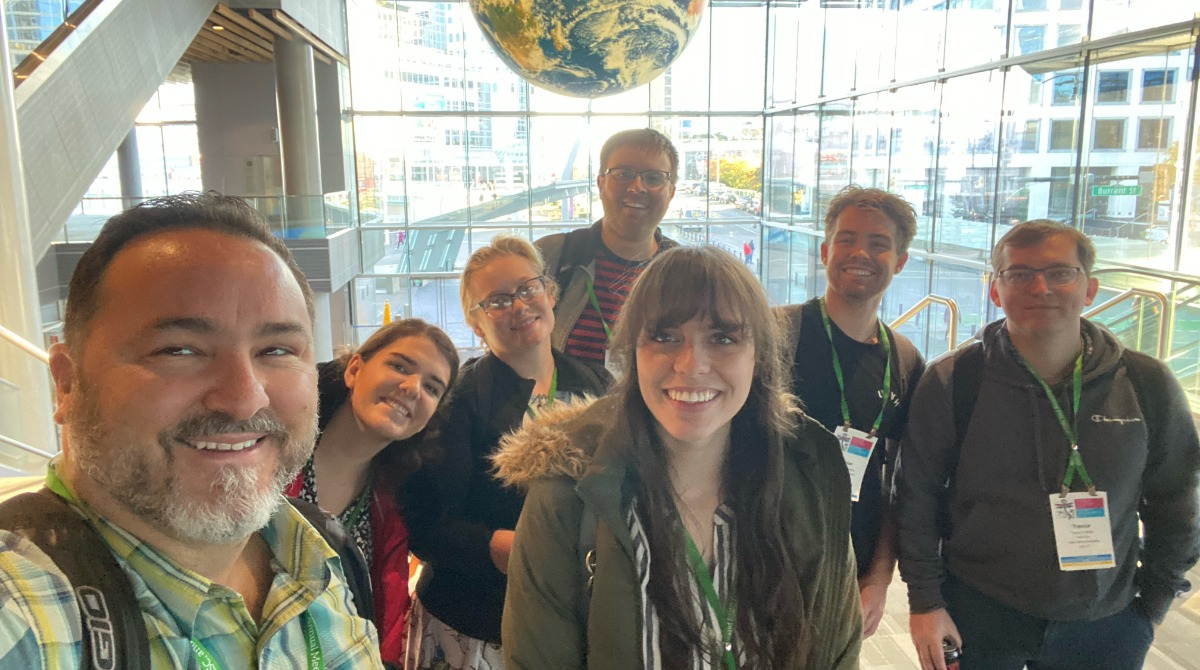
Last November, a group of Utah Valley University (UVU) biology students and professors beelined to the Vancouver Convention Centre. Thousands of others joined them like a swarm of locusts. The building was a hive of activity. Its visitors were social butterflies, presenting, researching, and networking. But what had these Wolverines all aflutter?
Insects.
Two UVU students — Kyri Forman and Marissa Ohran — won awards for their research at The Entomological Society of America (ESA), Entomological Society of Canada (ESC), and the Entomological Society of British Columbia (ESBC) Joint Annual Meeting held from Nov. 13-16 in Vancouver, British Columbia.
“A lot of these meetings tend to focus primarily on principal investigators, specifically professors, postdoctoral researchers, and graduate students,” said UVU biology professor Carl Hjelmen. “Undergraduates tend to be underrepresented. So, it's a huge deal that we even had this many students from an undergraduate institution like UVU get to go to this meeting. We had all seven of our undergraduate students present, whether that be an oral presentation or a poster presentation.”
Kyri Forman, a sophomore studying biology, holds a lifelong love for butterflies. With her faculty mentors — biology professor Heath Ogden and chemistry professor Craig Thulin — she procured a rare white morph monarch butterfly to pursue her research. After looking at the butterfly’s unique proteins and proteomics of the eyes, Forman concluded that its mutations don’t allow it to see color.
“[The white morph monarch] is, in fact, colorblind,” Forman said. “They are missing pigment in their eyes. We don’t have any live ones at the moment, but we do think it's really likely just because they're missing that in their eyes, and based off of previous reports, these white monarchs have a harder time breeding. The person who raised them had to hand-pair them.”
For her findings, Forman won first place in the Undergrad: Physiology, Biochemistry, and Toxicology: General poster section. Part of her research is already published, and she continues conducting graduate-level research and working on her second paper at UVU.
“It was really cool to be able to go to the conference,” Forman said. “I've been studying butterflies since I was eight. In classrooms, there is a little bit of a disconnect if your learning is just from a lecture; you're not actually getting to see it. [At the conference,] I got to actually meet other people who were in the field and doing cool things and learn about their work whilst presenting my work, which I obviously did not do in a classroom setting, but [through] hands-on research. It was just a lot of fun.”
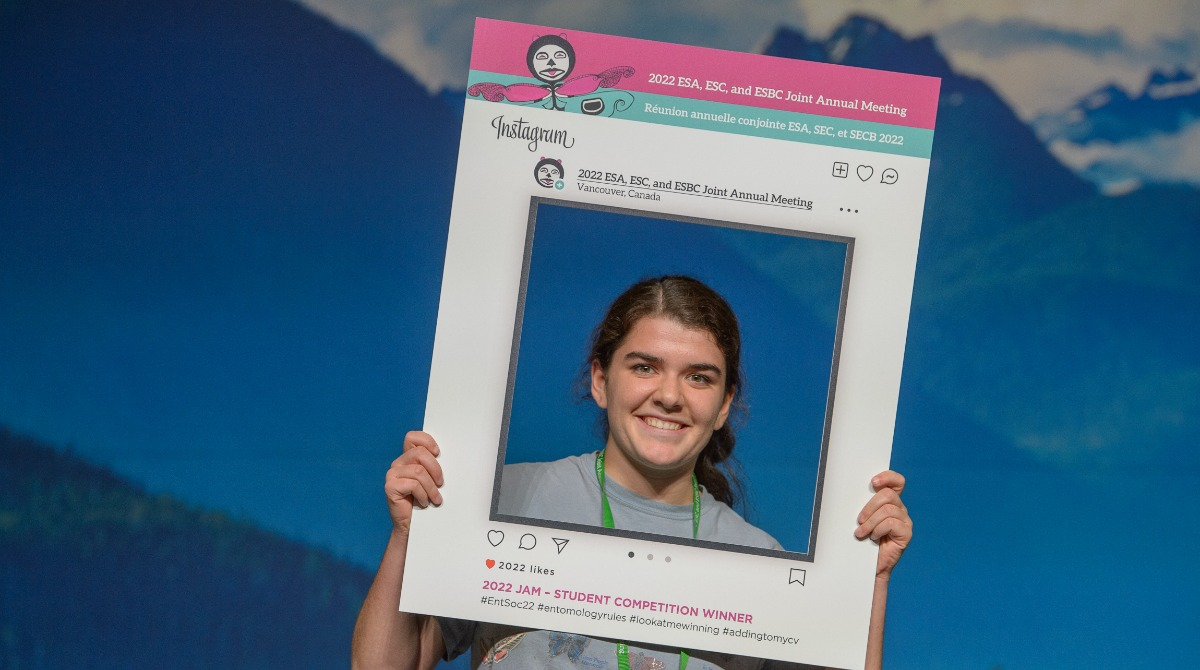
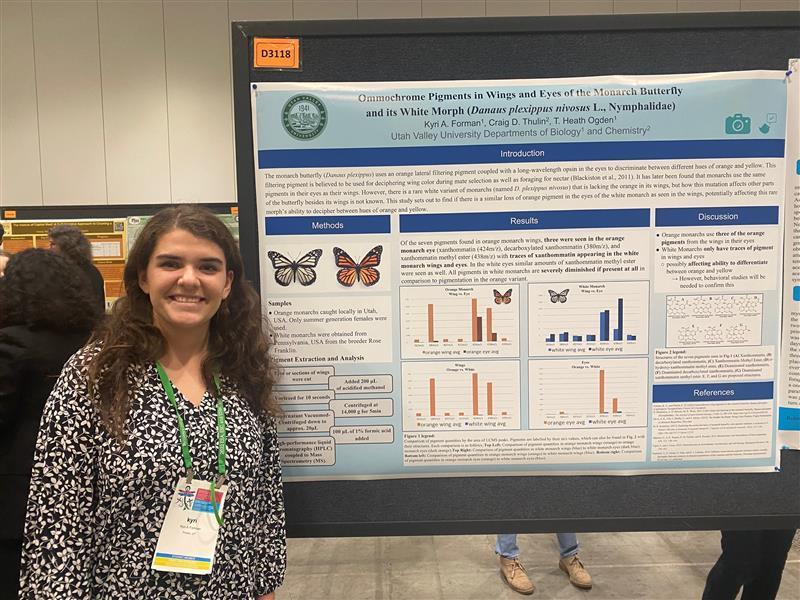
Photo courtesy of Carl Hjelmen
Marissa Ohran, a senior studying bioinformatics, won second place in Undergrad: Systematics, Evolution, and Biodiversity for her research in the heterochromatic genomes of drosophila, a type of fly that lives on cacti. Ohran assembled the fly’s genomes, using several computer programs to compare the outcomes.
“I used three different assembly programs to assemble the genomes,” Ohran said. “A big takeaway I learned is the importance of comparing different programs to get different takes on the fly’s genomes.”
The bioinformatics program will have its first graduates this May, including Ohran.
Ohran’s mentor, biology professor Carl Hjelmen, remarked on the importance of getting students out of the classroom and into events such as the ESA, ESC, and ESBC Joint Annual Meeting.
“I'm very well-connected in this world of some of the newer faculty and entomology,” Hjelmen said. “My goal was, ‘how many people can we introduce these students to?’ [To get into graduate school,] you don't just put an application in, and you're good to go. You have to start developing a connection, then you have to have an inside source. We were trying to introduce these students to as many people as possible, whether that be graduate students in different labs, people that I know from graduate schools, or university faculty.”
For biology professor Ogden, the benefits of engaged learning experiences such as these go far beyond academics.
“Mentored research is the best, highest-impact practice that exists,” Ogden said. “One of the best things that we could do at UVU is to continue to fund mentored research. It helps to keep students in school, improves their performance in school, and ultimately, it's going to make them successful for graduation and then beyond.”
Learn more about the UVU College of Science.
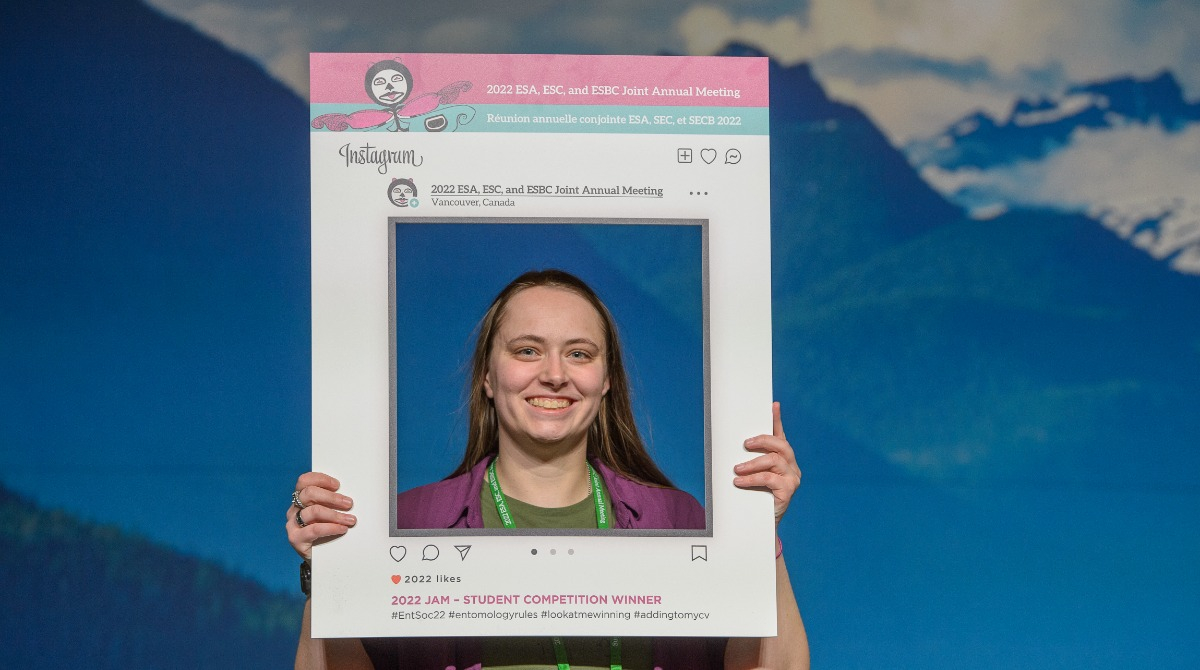
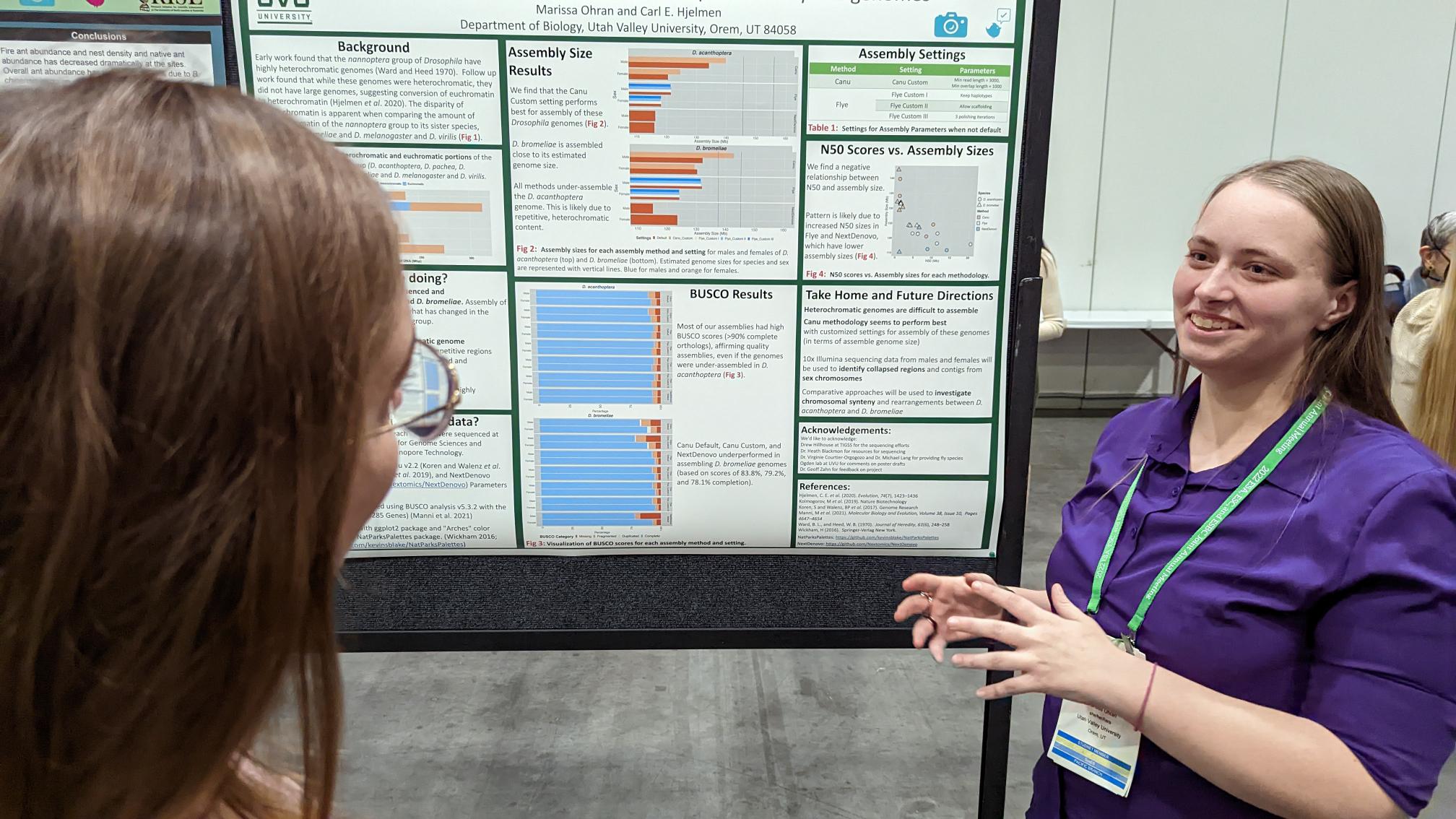
Photo courtesy of Carl Hjelmen